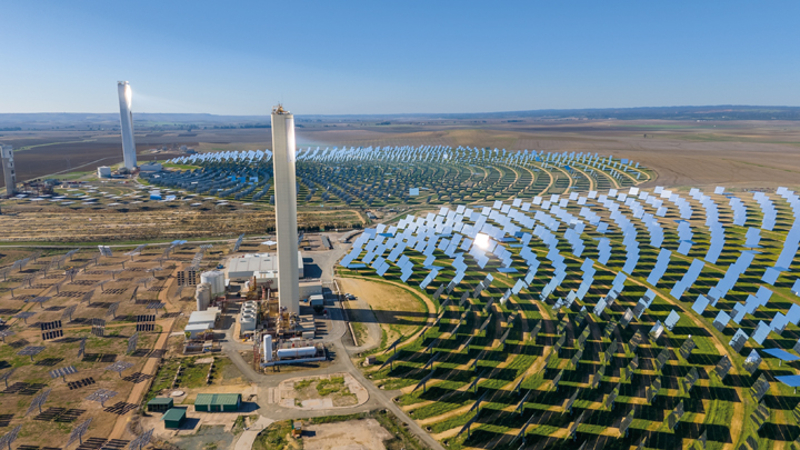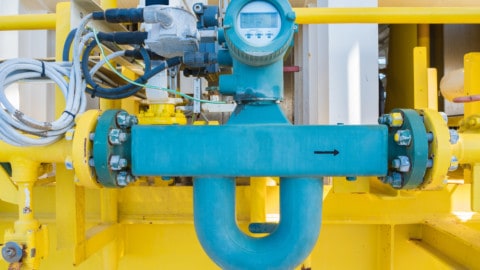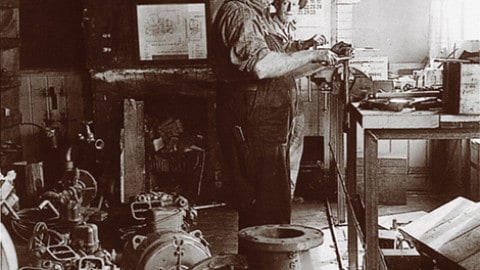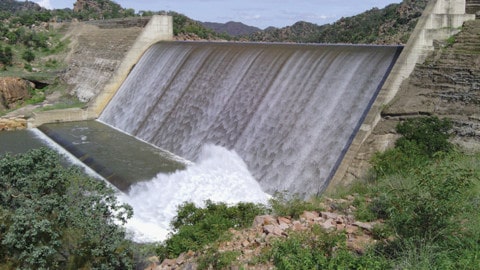By Holly Tancredi, Contributing Editor
Most renewable power projects are in need of a pump and this is definitely the case for concentrated solar power (CSP), a technology built on generating power from the sun’s energy through heat. Thanks to national research and investments, CSP has been building in popularity. Now, its potential is being tested under the Australian sun to help the nation reach net zero – all thanks to pumps.
With so many renewable energy sources available – from wind, pumped hydro, and traditional solar PV – boasting technology that has been tried and tested, why are organisations like CSIRO and ARENA still investing in and researching new technologies? Australia has a diverse environment.
With its climate, large land mass and domestic resources mix just a few of the variables in play there is no singular solution to ensuring Australia’s energy can be renewable and sustainable for future generations. Hand-in-hand with the developing technology, especially as it relates to concentrated solar thermal power, will be the pump industry.
What is concentrated solar power?
CSP, sometimes known more as concentrated solar thermal (CST), is a building power generation option in Australia. When developed, CSP plants look like something out of a sci-fi movie. Rather than the horizontal rows of solar panels commonly seen in standard solar PV farms, CSP arranges the mirror panels (or heliostats) in a circular fashion around a large, central solar receiver.
The mirrors reflect sunlight onto the receiver. Inside the receiver can either be thermal oil, water, or molten salt or sodium. This material is then heated through the sun and the reflection from the heliostats. Next, the heated resource is pumped to a boiler where it’s converted into steam to drive the generator, which then generates electricity.
CSP works in contrast to its solar PV counterparts as PV panels instead directly convert sunlight into electricity. The panels absorb light, loosen electrons and create a direct DC current. It’s then turned into AC power, usually through inverters, appropriate for a power network. CSP is also advantageous over solar PV because the captured heat can be stored over longer periods of time and with less energy loss in a cost-effective way, meaning electricity can be generated even when the sun isn’t shining.
Molten salt pumps
For many types of CST, the plant salt will be heated to molten and to transfer the heated, molten salt from the tower receiver to a boiler requires a molten salt pump. Four major pump types are used to transfer molten salt, and the type of pump used depends on the temperature of the molten salt: vertical cantilever pumps, vertical pumps, vertical submerged bearing pumps and axial flow pumps.
Due to the nature of molten salt, there are some critical aspects of molten salt pumps that must be taken into consideration when analysing the best design to use. The choice of pump type depends on factors such as the specific requirements of the application, temperature considerations, space constraints, and the need for efficient fluid circulation.
Safety is also an important concern in molten salt pump design and choices. If any moisture reaches the salt tank, solids can form or high corrosion can occur. This means the pump’s rotating shaft must be sealed correctly and take into account the heat migration and the seal’s operating temperature.
Other considerations include the need for heat fans to reduce migrating temperatures up the shaft, and to conduct thermal and stress modelling to ensure that there are no stress breaks or potential for unwanted distortion.
Funding and research
Since 2011, ARENA has funded and supported multiple CSP projects and plants. Many of these include pilot and technology research or testing to make the technology more viable, and find more cost-effective solutions. Due to CSP still being a relatively new application across Australia’s energy landscape, new pilots and projects are designed to help future developments.
This includes helping to remove barriers to CSP uptake, increasing the cost and technical performance knowledge of CSP and improving overall technology and commercial readiness of the CST and CSP technology as an alternative option to medium duration energy storage projects.
CSIRO’s Chief Solar Scientist Wes Stein said the investment and research into CST is critical for helping diversify Australia’s renewable energy needs. “One of the attractions of CSP is that you can integrate nicely with other thermal power sources, not just through the grid but actually on site,” Mr Stein said. “We could over time see the level of gas dropping and the level of thermal energy storage integrated with a solar thermal plant increasing.”
Power in action
Australia’s most recent large-scale project involving CSP is RayGen’s power plant. RayGen has utilised its unique modules to be almost 2,000-times more powerful than traditional panels. RayGen’s plants also utilise pumps to store and hold both the heated water, alongside pumping the liquid to cool the modules to prevent overheating.
Another project is the Vast Solar Port Augusta Concentrated Solar Thermal Power Project which has been underway since early 2023, for a 2028 completion date. The project is designed as a 30MW/288MWh CSP plant in South Australia. ARENA has called this project the next step in achieving a grid-scale application of CSP and provided $65 million in funding.
A past 2014 Vast Solar CSP plant cost $10.06 million, with $4.99 million contributed by ARENA for 6MW thermal energy. This generated 1.1MW of electricity – equivalent to powering 400 homes – and held three hours of thermal energy storage. The plant included 3,500 mirror modules and a singular tower.
Reflecting on the future
Reaching net zero as a nation will require a collaborative, diverse effort. Renewable energy, in its many forms, will ensure Australia can decarbonise and foster a more sustainable society for future generations. Pumps and their use in CSP prove that even while technology evolves, pumps will always hold a pivotal place in the power generation.





















